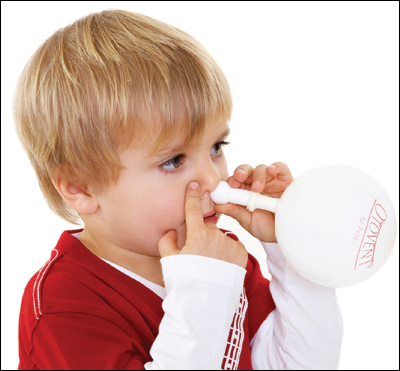Nasal balloon effectively treats 'glue ear' in children
According to a recent study, treatment with a nasal balloon can be used in a primary care setting to clear up otitis media with effusion, or glue ear, in children.
“We have found use of autoinflation in young, school-aged children with otitis media with effusion to be feasible, safe and effective in clearing effusions, and in improving important ear symptoms,” Ian Williamson, MD, of the University of Southampton, United Kingdom, and colleagues wrote. “The method has scope to be used in many symptomatic children, and is capable of producing better management and outcomes in primary health care systems.”

Ian Williamson
The researchers compiled a cohort of 263 children with otitis media with effusion from 43 family practices located in the U.K. The children, aged 4 to 11 years, were divided into a control group (n = 131) that received only the usual care and a variable group (n = 132) that was assigned usual care and treatment with a nasal balloon (Otovent, Kestrel Medical). Nasal treatment was administered three times daily for 1 to 3 months.
At 1 month, children receiving nasal balloon therapy were more likely to be cleared of otitis media with effusion, confirmed by tympanometry (adjusted RR = 1.36; 95% CI, 0.99-1.88). The results were similar at 3 months, with the variable group more likely to have normal tympanometry, when compared with controls (aRR = 1.37; 95% CI, 1.03-1.83).
The researchers also noted secondary outcomes associated with use of the nasal balloon. Throughout the study, quality of life was determined through the use of patient diaries, assessment of adverse events, and the OMQ-14 instrument. Both child and parent QOL were improved by decreasing the stress related to the adverse events and symptoms associated with otitis media effusion.

Figure 1. Child demonstrating a nasal balloon device.
Source: Canadian Medical Association Journal
Based on the safety and efficacy of their study results, the researchers said use of a nasal balloon to treat otitis media with effusion in children aged older than 4 years should be considered as a replacement for usual care methods.
“Wider use of this device has considerable potential to address the present lack of treatment options for most symptomatic children, and the frequency with which inappropriate antibiotics continue to be used to fill this gap,” Williamson and colleagues wrote. – by David Costill
Disclosure: The researchers report no relevant financial disclosures.
